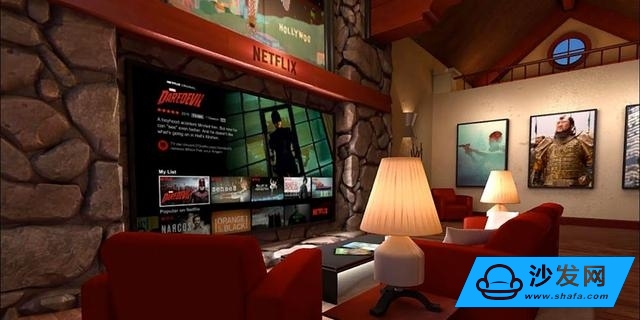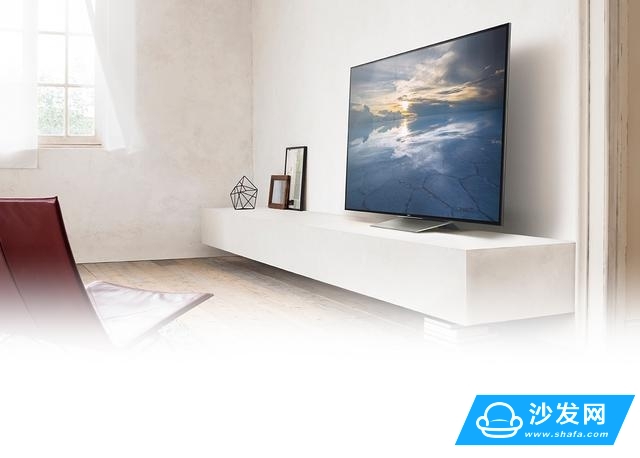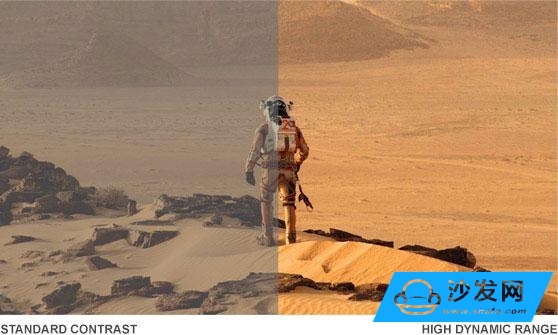In the Sony Expo China 20th anniversary expo conference on March 29th, Sony let professional media experience the performance of the latest R&D HDR 4K TV R&D machine. The picture quality and color gamut are amazing. Then there is no use for it. The reporters who watched the Black House were forbidden to take photos because the R&D work had not been fully completed. A new product that was likely to be available on the market six months later warmed up in advance, reflecting the confidence of the manufacturers and the urgency of the market. . In fact, it is not just Sony that launched HDR TV has become a popular keyword and development trend in the television industry.
At this year's International Consumer Electronics Show (CES 2016), HDR has become another focus of attention in the television field following 4K. LG, Samsung and Sony's three well-known TV manufacturers have demonstrated new TV products supporting HDR display, such as LG's SIGNATURE 4K OLED series, Sony's X9300D series, and Samsung's borderless quantum dot SUHD TVs. On March 30th, domestic manufacturers TCL, Skyworth, and Changhong all joined the domestic HDR display technology certification specification.
A photo HDR is not TV HDR
The first thing to be reminded is that TV HDR and photo HDR are two different things. Do not confuse it. Just happen to share the same name. It is like football and rugby. It's not a thing. TV HDR helps to extend the contrast and color of the TV, making today's HDTVs more realistic and the images natural. Photo HDR combines multiple images with different exposures to create a single image that mimics the larger dynamic range.

HDR is designed for television to show you more realistic images, people have more contrast, brightness and color. The "high dynamic range" of HDR photos is not the true HDR of video requirements. How does HDR TV work? Let's take a look at the two parts of HDR: TV and backlight.
The first part, TV, is actually a relatively easy part to understand. Compared with ordinary TVs, HDR TVs have more sophisticated techniques for local dimming and light control, and they have a wider range. HDR's Wide Color Gamut (WCG) performance is also very strong. Of course, just because a TV HDR appears does not mean that it is better than non-HDR TVs. HDR is an ecological chain. With the support of hardware and software, its ultimate goal is to be able to display HDR movies and TV programs.
For example, as in the 3D era, content is the most difficult part. To really look good HDR TVs need HDR content, which is very rare today and HDR cameras are needed to shoot. TV shows and 4K resolution movies are rare, and HDR TV shows and movies are even rarer. So far only Amazon has released, including only a couple of programs and Sony's part of the film, only a handful.


Netflix said it will provide HDR in the future, but no other content provider has announced HDR's work yet. HDR can be carried on physical disks, HDR versions can be burned on discs allowed by Ultra HD specifications, and also has Dolby's standard
Second, currently more representative of several HDR TV products
CES 2016 Main HDR TV Overview At this year's CES, in addition to VR has attracted a great deal of attention, in the field of video, new HDR TV has become a major new product recommended by major manufacturers. HDR presents a brighter, clearer, more realistic picture than ordinary high-definition and ultra-high-definition televisions, attracting a large number of visitors to stop and experience.
1. Sony: The X9300D series and X8500D series X9300D series televisions are equipped with a new network-based backlight illumination structure based on "dynamic backlight system - Elite Edition", with a maximum brightness of 4000 nit (1 nit = 1 cd/m2) and can be rendered even more. Delicate colors and more vivid contrast of light and shade. In addition, the X9300D has a slim wall effect in the form of the fuselage, only 36.7 mm from the wall behind the wall. The television was first sold in China at the beginning of 2016, of which 55 inch (1 in = 2.54 cm) is priced at 14,999 yuan and 65 inch is priced at 2,199 yuan. The X8500D series is positioned at mid-to-high end and uses 4K processing chip X1, 4K sharp image processing engine PRO, and Terricolor display technology to better represent HDR details. The series also has 55 in and 65 in two sizes, priced at 8,999 yuan and 15,999 yuan respectively.
 2.LG: Signature series, G6 series and E6 series LG released several HDR 4K OLED TVs at CES 2016. These TV models use Dolby Vision technology to support the next-generation broadcast transmission standard BT.2020, equipped with LG's latest Web OS 3.0 smart TV system. In appearance, the "Picture-on-Glass" design is used, and its thickness is only 2.57 mm. The current pricing and opening date of the new televisions have not yet been announced.
2.LG: Signature series, G6 series and E6 series LG released several HDR 4K OLED TVs at CES 2016. These TV models use Dolby Vision technology to support the next-generation broadcast transmission standard BT.2020, equipped with LG's latest Web OS 3.0 smart TV system. In appearance, the "Picture-on-Glass" design is used, and its thickness is only 2.57 mm. The current pricing and opening date of the new televisions have not yet been announced.
3. Samsung: Quantum-Spot SUHD Series Samsung's new generation of SUHD TVs released in 2016 added HDR capabilities to the surface-retaining 4K screen. The screen uses a 10-bit quantum dot technology with a brightness of 1 000 nit. The TVs are equipped with the Tizen operating system, built-in IoT HUB technology, and are available in 49 models with 49 to 88 inches. The prices and launch dates have not yet been announced.
Third, HDR, full name High Dynamic Range, that is, high dynamic range
When you first see HDR, it's easy to understand the bracketed composite image of the camera. However, the HDR technology of video is not the technical meaning of still images. Generally speaking, HDR can expand the brightness range of the display, show more details of highlights and shadows, bring richer colors and more vivid and natural details to the picture, which makes the television picture closer to the human eye. If 4K resolution is an increase in the number of pixels, then HDR display technology is an upgrade of pixel quality. Compared with 4K resolution, the visual shock caused by HDR technology is more obvious. Regardless of the size of the screen and the distance of the viewing distance, its effect on the improvement of the picture quality is obvious. Currently, 4K resolution has become the standard for major TV manufacturers' flagship products, and HDR as the next step in the development of ultra-high-definition has become a new favorite in terminal manufacturing.
In recent months, several UHD broadcast tests in the industry have used 4K HDR standard content. At CES 2016, both LG and Samsung used the ATSC 3.0 standard for a 4K HDR broadcast demonstration. In addition, the production of HDR content has begun to emerge. In online video, streaming media giant Amazon has taken the lead in launching Mozart in the jungle of the first 4K HDR episode in June last year, and Netflix has transformed its home-made play Marco Polo into a format that supports HDR displays. It can be imagined that in 2016, it will be the year of standardization and industrialization of HDR.

IV. Introduction to HDR Technology
The "dynamic range" in the HDR concept refers to the ratio between the brightest part and the darkest part of an image. The range of brightness that can be felt by the human eye is about 10-3th power to 10th 6th power nit (forgive Xiao Bian who can't find the soft keyboard on the input character of the power), the instantaneous contrast range that can be felt can reach 10000 :1. At present, the brightness of consumer-grade liquid crystal displays is generally around 300 to 400 nits, and the brightness range is generally 2000:1. It can be seen that the brightness of human eyes is much higher than the current mainstream display devices. The HDR display technology is to increase the brightness range of the display, so as to make the display brightness brighter, it also makes the rendered black even darker. The current limit of display contrast is determined by the ITU BT.709 standard released in 1990. In order to achieve the best viewing effect, the electro-optical transfer function (EOTF) in this standard is based on the characteristics of past CRT displays. However, the brightness of a CRT display generally does not exceed 100 nits. For a display with a brightness of 400 nits or even 1000 nits, the BT.709 standard has limited the presentation of the best display effect.
Therefore, many organizations in the broadcast and television world have proposed new HDR display technologies to achieve higher dynamic range display. The key to HDR display technology is the definition of electro-optical transfer function (EOTF) and photoelectric conversion function (OETF), that is, the conversion rule between electrical signals and optical signals. At present, there are mainly two new electro-optical conversion schemes to replace the gamma curve used in the CRT era. One is the perceptual quantizer (PQ) proposed by Dolby Laboratories' Dobly Vision HDR program, and the second is the logistic gamma distribution (HLG) jointly developed by BBC and NHK. The Dolby PQ can achieve 107 high dynamic range with a 12-bit color depth, and its brightness range is 10-3 to 104 nit. The scheme determines the requirements of the quantization bit according to the threshold of brightness resolution of the human eye at the display end, which is consistent with human visual physiology and visual psychology, and the use of quantization bits is more economical. The HLG proposed by the BBC and NHK respectively decodes the highlight and low-light components contained in the HDR signal in two different ways. The low-light part uses the standard gamma curve (this is the basic standard of BT.709. The same), while the high-light part (over 100nit) uses a logarithmic curve, which is compatible with SDR Ultra HDTV while supporting HDR. However, different HDR technologies require corresponding display devices to perform decoding adjustments.
A TV that can display Dobly Vision HDR content may not show the HDR content produced by the BBC. This has caused some obstacles to the large-scale promotion of HDR technology. Therefore, the standardization has become a problem that needs to be solved in the development of HDR under the condition that the technical conditions are already available.

V. HDR standardization
At present, industry standards organizations around the world have already invested in the formulation of HDR standards. In March 2015, the Society of Motion Picture and Television Engineers (SMPTE) first published the SMPTE ST 2084, which adopted the PQ curve of Dolby Vision. This standard was adopted by other industry organizations as its own standard system of electro-optic conversion standards.




1. The Blu-ray Disc Association (BDA) BDA is committed to the development of the ultra-high definition Blu-ray series of standards and completed the Ultra-HD Blu-ray standard and trademark last year. The standard will include 4K resolution of 3840x2160 pixels, wide color gamut (upgrade to BT.2020 standard), high frame rate (60fps), etc. It will be authorized from August 24, 2015. In addition, the standard will support open HDR using the 10-bit HEVC encoding and the SMPTE ST 2084 standard, while preparing to use Dolby Vision and Philip recommendations as an option. BDA will also use 10-bit coding and wide color gamut for current SDR content.
2. The Consumer Electronics Association (CEA)2 of the United States drew up the contents of HDR technology supported by TV and display industry products, and defined "compatible HDR monitor". These include: At least one interface in a television, monitor, or projector that can support HDR technology, and in compliance with the provisions of digital television specification document CEA-861-F and uncompressed video specification CEA-861.3. In addition, HDR10 media transmission standards must also be supported. For example, HDR video can be played via IPTV or HDR video can be transmitted via the HDMI interface. The HDR10 media profile needs to support the following: SMPET ST 2084 electro-optical conversion standard; color sampling: 4:2:0; bit depth: 10 bits; color space compliant with BT.2020; support for metadata SMPTE ST 2086).
3. Ultra HD Alliance (UHD Alliance) At the beginning of this year's CES 2016, the Ultra High Definition Alliance released the 4K/HDR certification mark “Ultra HD Premiumâ€. It requires a device resolution of 3820*2160, a color depth of up to 10 bits, and support for BT.2020 color gamut signal input. The display covers more than 90% of the DCI-P3 gamut space. In terms of HDR display, this standard requires: compliance with the SMPTE ST2084 electro-optic conversion standard; peak brightness and black level reach one of the following: (1) brightness above 1000 nits/black level below 0.05 nits (mainly for LCD displays) (2) ) Brightness above 540 nits/black level below 0.0005 nits (mainly for OLED displays) In addition, according to the HDR Imaging Ecosystem Report released by the SMPTE Research Team in September 2015, other organizations' plans for the development of HDR standards are as follows: ATSC: Consideration is being given to adding transport HDR content to the ATSC 3.0 Terrestrial Broadcasting Standard SCTE (Association of Wired and Telecommunications Engineering): Began researching future HDR wired transmission MPEG: Evaluate the impact of HDR and consider whether various tools in the HEVC compression standard need to be adapted. Streaming media delivery of HDR content is yet to be defined.
Japan's ARIB has released an OETF standard (ARIB STD-B67). NHK has announced a schedule for the transmission of HDR WCG images. European DVB is actively seeking home options for possible HDR transmission. ITU-R SG-6 has formed an opinion about HDR. Rapporteur Group (RG24) Recommendations for Television Systems
Sixth, HDR development prospects
HDR is not an isolated technology, but part of the overall planning of Ultra HDTV. Along with HDR's high-brightness range display, there will also be a higher color depth and a larger color space range. The higher the color depth, the more colors that can be supported. The increase of color depth not only increases the gray value of the image, but also makes the visual transition of the same color system smoother, avoiding obvious stratification when expressing the gradient color. The new generation of ultra-high definition specification ITU BT.2020 will also have 70% more color range than BT.709, especially in the high brightness areas of green, yellow and cyan. In the HDR standards that have now been released, the color depth and color space have been stipulated accordingly. These parameter enhancements together bring about a "better pixel" display. HDR technology will be added to 4K or even 8K TVs, combining "better pixels" with "more pixels" to redefine the TV picture. According to IHS forecasts, shipments of HDR TVs meeting the acceptance criteria of the Ultra HD Alliance are expected to surge from 2.9 million units in 2016 to 32.6 million units in 2019.
In its latest European ultra-high-definition market forecast, IHS stated that it is expected that HDR TV will enter the market in the second quarter of this year, and sales will increase significantly in 2017. By 2019, HDR models will occupy the total sales of ultra-high-definition TVs. 38% of the amount. In addition, ABI Research predicts that by 2020, 70% of 4K ultra high-definition televisions will support new technologies such as high dynamic range (HDR), wider color gamut, high frame rates, and immersive audio. At the same time, compared with the impact of emerging services such as VR on ordinary consumer usage habits, HDR, like Ultra HD, is more “approachableâ€, so it is based on technological breakthroughs, rapid standardization progress, and HDR TV terminals. Market trends, the future HDR TV will usher in a period of rapid development in the market.
VII. HDR does not require new cable, HDMI2.0 support
Ha, this must be a topic that everyone is concerned about, HDR will not use the new cable data line. The answer was rejoicing. When the computer newspaper interviewed Sony's technicians, the other party pointed out clearly that the current high-speed HDMI 2.0a cable can support HDR. Of course, as the entire system, the source device (HDR 4K Blu-ray player) and the TV must be devices that support HDMI 2.0a transmission. An increasing number of firmware updates for many HDMI 2.0 devices released this year can support HDMI 2.0a. If you want to experience HDR TV and have the strength of local tyrants, then be prepared. The wave will surely hit after September of the second half of the year.
VIII. Is there a standard in the world for the harmonization of HDR technology?
Facing the complicated and numerous HDR technology in the entire audio-visual market, it must be unified and standardized by relevant organizations. At present, the U.S.-based organizations regulate it, among which the CEA (Consumer Electronics Association) brings with it the “HDR Static Metadata Extensions†HDR static metadata extension specification for the metadata, and another organization SMPTE. The Society of Motion Picture Television Engineers (Society of Motion Picture Television Engineers) brought ST 2086:2014 “Mastering Display Color Volume Metadata Supporting High Luminance and Wide Color Gamut Images†to display device color capacity metadata for high brightness and wide color gamut images. The production specification, in fact, also includes the definition of HDR metadata. In addition, SMPTE has also brought SMPTE ST 2084 on defining the EOTF electro-optical transfer function for high dynamic range imaging, defining the PQ-induced quantization coding curve so that it is also at a lower color depth. High dynamic range images can be achieved.
In addition, is there only one HDR high dynamic range specification? This is a topic that everyone is very concerned about. After all, if every display device manufacturer has its own standards and they are not compatible with each other, whether it is the popularity of HDR technology in the future or if we go to buy a display with HDR There are many problems with the equipment. According to the current situation, there are indeed many different HDR specifications in the world, including Dolby Vision, Technicolor, BBC (British Broadcasting Corporation), Phillips, etc. Even different TV manufacturers will have their own HDR processing methods, including Sony, LG, Samsung, etc. The difference is that there is a metadata called HDR metadata in the HDR technology to record the static extension information of the video signal. Because different HDR technologies have different specifications, corresponding display devices need to be decoded and adjusted. In short, if a TV or projector can display Dolby Vision HDR content, it does not mean that it can handle HDR content produced by BBC.
At this year's International Consumer Electronics Show (CES 2016), HDR has become another focus of attention in the television field following 4K. LG, Samsung and Sony's three well-known TV manufacturers have demonstrated new TV products supporting HDR display, such as LG's SIGNATURE 4K OLED series, Sony's X9300D series, and Samsung's borderless quantum dot SUHD TVs. On March 30th, domestic manufacturers TCL, Skyworth, and Changhong all joined the domestic HDR display technology certification specification.
A photo HDR is not TV HDR
The first thing to be reminded is that TV HDR and photo HDR are two different things. Do not confuse it. Just happen to share the same name. It is like football and rugby. It's not a thing. TV HDR helps to extend the contrast and color of the TV, making today's HDTVs more realistic and the images natural. Photo HDR combines multiple images with different exposures to create a single image that mimics the larger dynamic range.

Photo HDR: Bracketing more than two images (left and center), combined display (right)
HDR is designed for television to show you more realistic images, people have more contrast, brightness and color. The "high dynamic range" of HDR photos is not the true HDR of video requirements. How does HDR TV work? Let's take a look at the two parts of HDR: TV and backlight.
The first part, TV, is actually a relatively easy part to understand. Compared with ordinary TVs, HDR TVs have more sophisticated techniques for local dimming and light control, and they have a wider range. HDR's Wide Color Gamut (WCG) performance is also very strong. Of course, just because a TV HDR appears does not mean that it is better than non-HDR TVs. HDR is an ecological chain. With the support of hardware and software, its ultimate goal is to be able to display HDR movies and TV programs.
For example, as in the 3D era, content is the most difficult part. To really look good HDR TVs need HDR content, which is very rare today and HDR cameras are needed to shoot. TV shows and 4K resolution movies are rare, and HDR TV shows and movies are even rarer. So far only Amazon has released, including only a couple of programs and Sony's part of the film, only a handful.


Netflix said it will provide HDR in the future, but no other content provider has announced HDR's work yet. HDR can be carried on physical disks, HDR versions can be burned on discs allowed by Ultra HD specifications, and also has Dolby's standard
Second, currently more representative of several HDR TV products
CES 2016 Main HDR TV Overview At this year's CES, in addition to VR has attracted a great deal of attention, in the field of video, new HDR TV has become a major new product recommended by major manufacturers. HDR presents a brighter, clearer, more realistic picture than ordinary high-definition and ultra-high-definition televisions, attracting a large number of visitors to stop and experience.
1. Sony: The X9300D series and X8500D series X9300D series televisions are equipped with a new network-based backlight illumination structure based on "dynamic backlight system - Elite Edition", with a maximum brightness of 4000 nit (1 nit = 1 cd/m2) and can be rendered even more. Delicate colors and more vivid contrast of light and shade. In addition, the X9300D has a slim wall effect in the form of the fuselage, only 36.7 mm from the wall behind the wall. The television was first sold in China at the beginning of 2016, of which 55 inch (1 in = 2.54 cm) is priced at 14,999 yuan and 65 inch is priced at 2,199 yuan. The X8500D series is positioned at mid-to-high end and uses 4K processing chip X1, 4K sharp image processing engine PRO, and Terricolor display technology to better represent HDR details. The series also has 55 in and 65 in two sizes, priced at 8,999 yuan and 15,999 yuan respectively.

3. Samsung: Quantum-Spot SUHD Series Samsung's new generation of SUHD TVs released in 2016 added HDR capabilities to the surface-retaining 4K screen. The screen uses a 10-bit quantum dot technology with a brightness of 1 000 nit. The TVs are equipped with the Tizen operating system, built-in IoT HUB technology, and are available in 49 models with 49 to 88 inches. The prices and launch dates have not yet been announced.
Third, HDR, full name High Dynamic Range, that is, high dynamic range
When you first see HDR, it's easy to understand the bracketed composite image of the camera. However, the HDR technology of video is not the technical meaning of still images. Generally speaking, HDR can expand the brightness range of the display, show more details of highlights and shadows, bring richer colors and more vivid and natural details to the picture, which makes the television picture closer to the human eye. If 4K resolution is an increase in the number of pixels, then HDR display technology is an upgrade of pixel quality. Compared with 4K resolution, the visual shock caused by HDR technology is more obvious. Regardless of the size of the screen and the distance of the viewing distance, its effect on the improvement of the picture quality is obvious. Currently, 4K resolution has become the standard for major TV manufacturers' flagship products, and HDR as the next step in the development of ultra-high-definition has become a new favorite in terminal manufacturing.
In recent months, several UHD broadcast tests in the industry have used 4K HDR standard content. At CES 2016, both LG and Samsung used the ATSC 3.0 standard for a 4K HDR broadcast demonstration. In addition, the production of HDR content has begun to emerge. In online video, streaming media giant Amazon has taken the lead in launching Mozart in the jungle of the first 4K HDR episode in June last year, and Netflix has transformed its home-made play Marco Polo into a format that supports HDR displays. It can be imagined that in 2016, it will be the year of standardization and industrialization of HDR.

4K HDR drama in the jungle of Mozart
IV. Introduction to HDR Technology
The "dynamic range" in the HDR concept refers to the ratio between the brightest part and the darkest part of an image. The range of brightness that can be felt by the human eye is about 10-3th power to 10th 6th power nit (forgive Xiao Bian who can't find the soft keyboard on the input character of the power), the instantaneous contrast range that can be felt can reach 10000 :1. At present, the brightness of consumer-grade liquid crystal displays is generally around 300 to 400 nits, and the brightness range is generally 2000:1. It can be seen that the brightness of human eyes is much higher than the current mainstream display devices. The HDR display technology is to increase the brightness range of the display, so as to make the display brightness brighter, it also makes the rendered black even darker. The current limit of display contrast is determined by the ITU BT.709 standard released in 1990. In order to achieve the best viewing effect, the electro-optical transfer function (EOTF) in this standard is based on the characteristics of past CRT displays. However, the brightness of a CRT display generally does not exceed 100 nits. For a display with a brightness of 400 nits or even 1000 nits, the BT.709 standard has limited the presentation of the best display effect.
Therefore, many organizations in the broadcast and television world have proposed new HDR display technologies to achieve higher dynamic range display. The key to HDR display technology is the definition of electro-optical transfer function (EOTF) and photoelectric conversion function (OETF), that is, the conversion rule between electrical signals and optical signals. At present, there are mainly two new electro-optical conversion schemes to replace the gamma curve used in the CRT era. One is the perceptual quantizer (PQ) proposed by Dolby Laboratories' Dobly Vision HDR program, and the second is the logistic gamma distribution (HLG) jointly developed by BBC and NHK. The Dolby PQ can achieve 107 high dynamic range with a 12-bit color depth, and its brightness range is 10-3 to 104 nit. The scheme determines the requirements of the quantization bit according to the threshold of brightness resolution of the human eye at the display end, which is consistent with human visual physiology and visual psychology, and the use of quantization bits is more economical. The HLG proposed by the BBC and NHK respectively decodes the highlight and low-light components contained in the HDR signal in two different ways. The low-light part uses the standard gamma curve (this is the basic standard of BT.709. The same), while the high-light part (over 100nit) uses a logarithmic curve, which is compatible with SDR Ultra HDTV while supporting HDR. However, different HDR technologies require corresponding display devices to perform decoding adjustments.
A TV that can display Dobly Vision HDR content may not show the HDR content produced by the BBC. This has caused some obstacles to the large-scale promotion of HDR technology. Therefore, the standardization has become a problem that needs to be solved in the development of HDR under the condition that the technical conditions are already available.

More in line with human details, HDR can bring you
V. HDR standardization
At present, industry standards organizations around the world have already invested in the formulation of HDR standards. In March 2015, the Society of Motion Picture and Television Engineers (SMPTE) first published the SMPTE ST 2084, which adopted the PQ curve of Dolby Vision. This standard was adopted by other industry organizations as its own standard system of electro-optic conversion standards.




At the CES 2016 at the beginning of this year, the Ultra High Definition Alliance (UHD Alliance) released the 4K/HDR certification “Ultra HD Premiumâ€. HDR is the battleground for future TV.
1. The Blu-ray Disc Association (BDA) BDA is committed to the development of the ultra-high definition Blu-ray series of standards and completed the Ultra-HD Blu-ray standard and trademark last year. The standard will include 4K resolution of 3840x2160 pixels, wide color gamut (upgrade to BT.2020 standard), high frame rate (60fps), etc. It will be authorized from August 24, 2015. In addition, the standard will support open HDR using the 10-bit HEVC encoding and the SMPTE ST 2084 standard, while preparing to use Dolby Vision and Philip recommendations as an option. BDA will also use 10-bit coding and wide color gamut for current SDR content.
2. The Consumer Electronics Association (CEA)2 of the United States drew up the contents of HDR technology supported by TV and display industry products, and defined "compatible HDR monitor". These include: At least one interface in a television, monitor, or projector that can support HDR technology, and in compliance with the provisions of digital television specification document CEA-861-F and uncompressed video specification CEA-861.3. In addition, HDR10 media transmission standards must also be supported. For example, HDR video can be played via IPTV or HDR video can be transmitted via the HDMI interface. The HDR10 media profile needs to support the following: SMPET ST 2084 electro-optical conversion standard; color sampling: 4:2:0; bit depth: 10 bits; color space compliant with BT.2020; support for metadata SMPTE ST 2086).
3. Ultra HD Alliance (UHD Alliance) At the beginning of this year's CES 2016, the Ultra High Definition Alliance released the 4K/HDR certification mark “Ultra HD Premiumâ€. It requires a device resolution of 3820*2160, a color depth of up to 10 bits, and support for BT.2020 color gamut signal input. The display covers more than 90% of the DCI-P3 gamut space. In terms of HDR display, this standard requires: compliance with the SMPTE ST2084 electro-optic conversion standard; peak brightness and black level reach one of the following: (1) brightness above 1000 nits/black level below 0.05 nits (mainly for LCD displays) (2) ) Brightness above 540 nits/black level below 0.0005 nits (mainly for OLED displays) In addition, according to the HDR Imaging Ecosystem Report released by the SMPTE Research Team in September 2015, other organizations' plans for the development of HDR standards are as follows: ATSC: Consideration is being given to adding transport HDR content to the ATSC 3.0 Terrestrial Broadcasting Standard SCTE (Association of Wired and Telecommunications Engineering): Began researching future HDR wired transmission MPEG: Evaluate the impact of HDR and consider whether various tools in the HEVC compression standard need to be adapted. Streaming media delivery of HDR content is yet to be defined.
Japan's ARIB has released an OETF standard (ARIB STD-B67). NHK has announced a schedule for the transmission of HDR WCG images. European DVB is actively seeking home options for possible HDR transmission. ITU-R SG-6 has formed an opinion about HDR. Rapporteur Group (RG24) Recommendations for Television Systems
Sixth, HDR development prospects
HDR is not an isolated technology, but part of the overall planning of Ultra HDTV. Along with HDR's high-brightness range display, there will also be a higher color depth and a larger color space range. The higher the color depth, the more colors that can be supported. The increase of color depth not only increases the gray value of the image, but also makes the visual transition of the same color system smoother, avoiding obvious stratification when expressing the gradient color. The new generation of ultra-high definition specification ITU BT.2020 will also have 70% more color range than BT.709, especially in the high brightness areas of green, yellow and cyan. In the HDR standards that have now been released, the color depth and color space have been stipulated accordingly. These parameter enhancements together bring about a "better pixel" display. HDR technology will be added to 4K or even 8K TVs, combining "better pixels" with "more pixels" to redefine the TV picture. According to IHS forecasts, shipments of HDR TVs meeting the acceptance criteria of the Ultra HD Alliance are expected to surge from 2.9 million units in 2016 to 32.6 million units in 2019.
In its latest European ultra-high-definition market forecast, IHS stated that it is expected that HDR TV will enter the market in the second quarter of this year, and sales will increase significantly in 2017. By 2019, HDR models will occupy the total sales of ultra-high-definition TVs. 38% of the amount. In addition, ABI Research predicts that by 2020, 70% of 4K ultra high-definition televisions will support new technologies such as high dynamic range (HDR), wider color gamut, high frame rates, and immersive audio. At the same time, compared with the impact of emerging services such as VR on ordinary consumer usage habits, HDR, like Ultra HD, is more “approachableâ€, so it is based on technological breakthroughs, rapid standardization progress, and HDR TV terminals. Market trends, the future HDR TV will usher in a period of rapid development in the market.
VII. HDR does not require new cable, HDMI2.0 support
Ha, this must be a topic that everyone is concerned about, HDR will not use the new cable data line. The answer was rejoicing. When the computer newspaper interviewed Sony's technicians, the other party pointed out clearly that the current high-speed HDMI 2.0a cable can support HDR. Of course, as the entire system, the source device (HDR 4K Blu-ray player) and the TV must be devices that support HDMI 2.0a transmission. An increasing number of firmware updates for many HDMI 2.0 devices released this year can support HDMI 2.0a. If you want to experience HDR TV and have the strength of local tyrants, then be prepared. The wave will surely hit after September of the second half of the year.
VIII. Is there a standard in the world for the harmonization of HDR technology?
Facing the complicated and numerous HDR technology in the entire audio-visual market, it must be unified and standardized by relevant organizations. At present, the U.S.-based organizations regulate it, among which the CEA (Consumer Electronics Association) brings with it the “HDR Static Metadata Extensions†HDR static metadata extension specification for the metadata, and another organization SMPTE. The Society of Motion Picture Television Engineers (Society of Motion Picture Television Engineers) brought ST 2086:2014 “Mastering Display Color Volume Metadata Supporting High Luminance and Wide Color Gamut Images†to display device color capacity metadata for high brightness and wide color gamut images. The production specification, in fact, also includes the definition of HDR metadata. In addition, SMPTE has also brought SMPTE ST 2084 on defining the EOTF electro-optical transfer function for high dynamic range imaging, defining the PQ-induced quantization coding curve so that it is also at a lower color depth. High dynamic range images can be achieved.
In addition, is there only one HDR high dynamic range specification? This is a topic that everyone is very concerned about. After all, if every display device manufacturer has its own standards and they are not compatible with each other, whether it is the popularity of HDR technology in the future or if we go to buy a display with HDR There are many problems with the equipment. According to the current situation, there are indeed many different HDR specifications in the world, including Dolby Vision, Technicolor, BBC (British Broadcasting Corporation), Phillips, etc. Even different TV manufacturers will have their own HDR processing methods, including Sony, LG, Samsung, etc. The difference is that there is a metadata called HDR metadata in the HDR technology to record the static extension information of the video signal. Because different HDR technologies have different specifications, corresponding display devices need to be decoded and adjusted. In short, if a TV or projector can display Dolby Vision HDR content, it does not mean that it can handle HDR content produced by BBC.